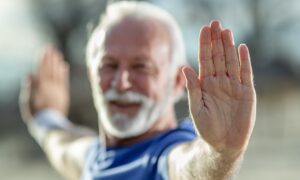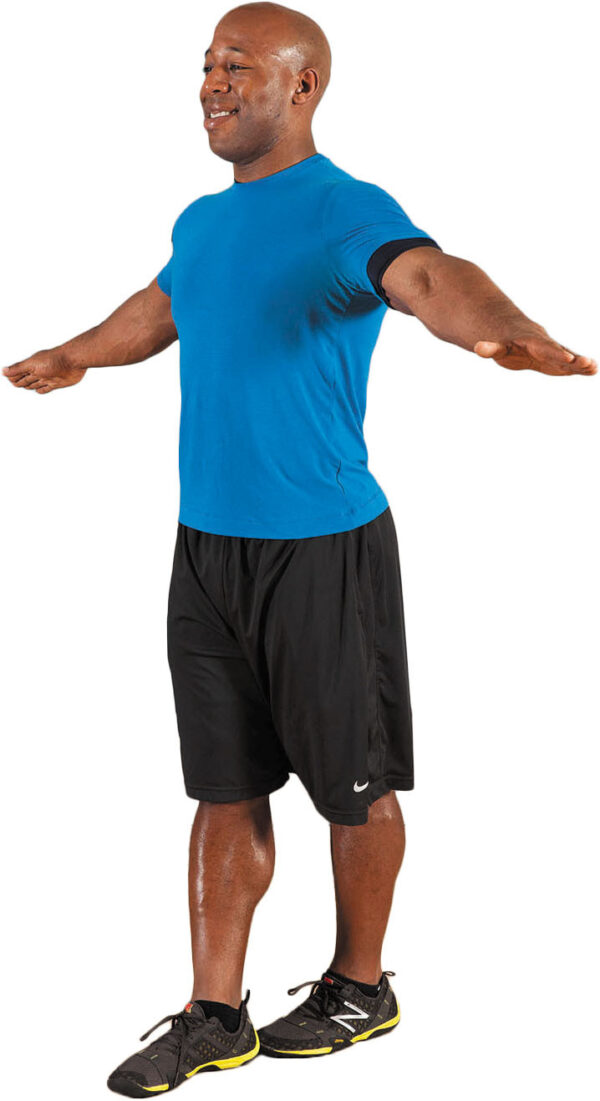Reduce Your Fear of Falling
Improving your balance, strength, flexibility, and gait will give you the confidence to stay active.Falling poses a major risk for injury as we get older, and it’s no wonder that many of us have a real fear of it. Unfortunately, fear of falling often winds up increasing the chance of a devastating spill. To protect your mobility and independence, it’s important to address this fear. Fear Factors Fear of falling often develops for two reasons. One is an awareness of age-related changes. Body systems that keep you steady — your muscles, joints, cognition, vision, hearing, nerves, and reaction time — all start to decline. You wind up being weaker and less flexible. You might have chronic aches and pains. That leads to heightened caution. “Our natural instinct is to slow down so we don’t fall. We shuffle our feet and take shorter strides; our feet don’t clear the ground as high as they used to; walking speed slows. As that happens, we become apprehensive about taking a step,” explains Michael Clem, a physical therapist with Spaulding Rehabilitation Hospital. “I have two patients with this problem right now. They tend to reach out for things and not move their feet. But trying to grab on to a piece of furniture that’s a little out of reach can make you lose your balance and fall.” A history of falls is another contributor to fear; if you’ve already fallen, you know how quickly it happens and how easy it would be to fall again. “And when fear increases, for any reason, people don’t want to be as active as they were. That makes physical decline happen faster,” Clem points out. Regaining Your Confidence To reduce your fear of falling, you’ll need to address underlying conditions, such as poor eyesight or joint problems. It will also help to work with a physical therapist to improve your balance and gait (walking pattern). The therapist will evaluate your physical strengths and weaknesses and try to understand your specific concerns about falling. “I’ll want to know what someone is afraid of,” Clem says. “Is it stepping off a curb or a set of stairs in the backyard? We can build exercises to address that one specific issue as well as any other weaknesses.” Starting Slowly You won’t be thrown into a rigorous exercise program. “We stay in a person’s comfort zone with a program that challenges them while they still feel safe,” Clem says. “I select exercises they’ll succeed at.” For balance exercises, that could mean standing with your arms at your sides and your feet together, with a railing or walker nearby for support. “I might have the person look left or right, and then reach for a target. This can be challenging, and they may sway, but they won’t fall. I’m right there behind them, and they can grab on to something if they need to,” Clem says. From there, you might work on standing with one foot in front of the other (see “Move of the month”), or standing on one leg at a time. Then you might try taking steps forward, backward, or to the side. As you learn to improve balance, you’ll also work on boosting muscle strength, flexibility, and range of motion. Expect a focus on the muscles in your buttocks, hips, thighs, and calves. Move of the month: Tandem standing (Photo by Michael Carroll) Stand with your arms at your sides and brace your abdominal muscles. Place your right foot in front of your left foot, heel to toe, and squeeze your inner thighs together. Lift your arms to your sides at shoulder level to help you balance. Hold 30 seconds. Return to the starting position, then repeat with your left foot in front. The Final Piece When you’re feeling stronger and more confident about performing activities without fear, you’ll focus on improving your gait. “We use metronomes to increase walking speed. We start off with 80 beats — and thus, steps — per minute, which is on the low end, and work up to 100,” Clem says. “Then we work on walking with your gaze ahead of you, so you don’t look down. People start shuffling less, walking faster, and becoming more confident.” Eventually, you’ll tackle walking short distances as your physical therapist coaches you. “The goal is to get you back to being able to walk in and out of your house, through a grocery store, or into a doctor’s office,” Clem says. At that point, the course of physical therapy will end. But, of course, the real work will begin. You’ll need to continue doing strength, stretching, and balance exercises on your own. “If you don’t, your fear may return and your fall risk will increase,” Clem says. “To counter it, we’ll want you to exercise and stay active for as long as possible.” Copyright (C) 2022 by Harvard University. For terms of use, please see https://www.health.harvard.edu/terms-of-use. Tribune Content Agency — May 1, 2022

Improving your balance, strength, flexibility, and gait will give you the confidence to stay active.
Falling poses a major risk for injury as we get older, and it’s no wonder that many of us have a real fear of it. Unfortunately, fear of falling often winds up increasing the chance of a devastating spill. To protect your mobility and independence, it’s important to address this fear.
Fear Factors
Fear of falling often develops for two reasons. One is an awareness of age-related changes. Body systems that keep you steady — your muscles, joints, cognition, vision, hearing, nerves, and reaction time — all start to decline. You wind up being weaker and less flexible. You might have chronic aches and pains. That leads to heightened caution.
“Our natural instinct is to slow down so we don’t fall. We shuffle our feet and take shorter strides; our feet don’t clear the ground as high as they used to; walking speed slows. As that happens, we become apprehensive about taking a step,” explains Michael Clem, a physical therapist with Spaulding Rehabilitation Hospital. “I have two patients with this problem right now. They tend to reach out for things and not move their feet. But trying to grab on to a piece of furniture that’s a little out of reach can make you lose your balance and fall.”
A history of falls is another contributor to fear; if you’ve already fallen, you know how quickly it happens and how easy it would be to fall again. “And when fear increases, for any reason, people don’t want to be as active as they were. That makes physical decline happen faster,” Clem points out.
Regaining Your Confidence
To reduce your fear of falling, you’ll need to address underlying conditions, such as poor eyesight or joint problems.
It will also help to work with a physical therapist to improve your balance and gait (walking pattern). The therapist will evaluate your physical strengths and weaknesses and try to understand your specific concerns about falling. “I’ll want to know what someone is afraid of,” Clem says. “Is it stepping off a curb or a set of stairs in the backyard? We can build exercises to address that one specific issue as well as any other weaknesses.”
Starting Slowly
You won’t be thrown into a rigorous exercise program. “We stay in a person’s comfort zone with a program that challenges them while they still feel safe,” Clem says. “I select exercises they’ll succeed at.”
For balance exercises, that could mean standing with your arms at your sides and your feet together, with a railing or walker nearby for support. “I might have the person look left or right, and then reach for a target. This can be challenging, and they may sway, but they won’t fall. I’m right there behind them, and they can grab on to something if they need to,” Clem says.
From there, you might work on standing with one foot in front of the other (see “Move of the month”), or standing on one leg at a time. Then you might try taking steps forward, backward, or to the side.
As you learn to improve balance, you’ll also work on boosting muscle strength, flexibility, and range of motion. Expect a focus on the muscles in your buttocks, hips, thighs, and calves.
 Move of the month: Tandem standing (Photo by Michael Carroll)
Move of the month: Tandem standing (Photo by Michael Carroll)
Stand with your arms at your sides and brace your abdominal muscles. Place your right foot in front of your left foot, heel to toe, and squeeze your inner thighs together. Lift your arms to your sides at shoulder level to help you balance. Hold 30 seconds. Return to the starting position, then repeat with your left foot in front.
The Final Piece
When you’re feeling stronger and more confident about performing activities without fear, you’ll focus on improving your gait.
“We use metronomes to increase walking speed. We start off with 80 beats — and thus, steps — per minute, which is on the low end, and work up to 100,” Clem says. “Then we work on walking with your gaze ahead of you, so you don’t look down. People start shuffling less, walking faster, and becoming more confident.”
Eventually, you’ll tackle walking short distances as your physical therapist coaches you. “The goal is to get you back to being able to walk in and out of your house, through a grocery store, or into a doctor’s office,” Clem says. At that point, the course of physical therapy will end. But, of course, the real work will begin. You’ll need to continue doing strength, stretching, and balance exercises on your own.
“If you don’t, your fear may return and your fall risk will increase,” Clem says. “To counter it, we’ll want you to exercise and stay active for as long as possible.”
Copyright (C) 2022 by Harvard University. For terms of use, please see https://www.health.harvard.edu/terms-of-use. Tribune Content Agency — May 1, 2022












